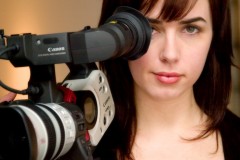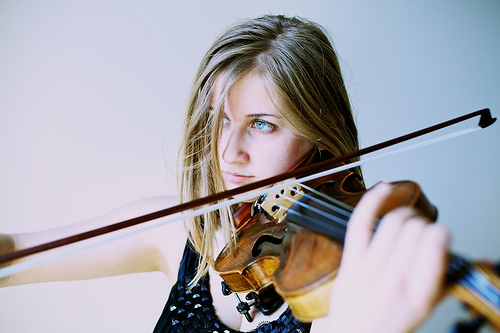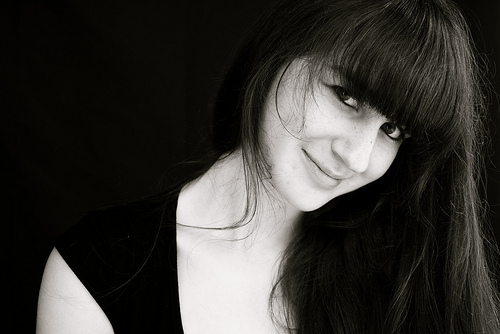
Headshots are simply photographic shots that focus on your face and shoulders. Sometimes a headshot includes only the face and the neck. Those that include the shoulders too are called ”three quarter shots”. Ideally, a headshot is taken to minimize one’s flaws and to enhance one’s features. This is particularly true for glamorous headshots (meant for actors, singers and models). But there are some headshots that are not quite dramatic viz. passport sized photographs, mug shots (those taken after an arrest) and those intended for corporate individuals. These headshots do not need specialized lighting and the expression of the subject’s face is usually neutral. Headshots can be colored or back and white.
Purpose Behind Headshots
Headshots are taken for a number of purposes. Mostly aspiring actors and models include them in their portfolio to give a better view of their face to the casting directors. These shots are usually taken from the front, placing the subject in the absolute center and often contain no surrounding scenes in order to give an emphasis to the subject’s face only.
-
Film And Television Actors/Models
These headshots are used to portray the individualism of the subject. Lighting and focus are the key factors here for a nice headshot. Next comes the make-up and attire. Usually black or white clothes are used to avoid distractions from the face to the clothes. The eyes are often highlighted and the rest of the face is kept a bit delicately focused. This is done as the eyes are the liveliest and the most expressive feature on the face. There are various attitudes that can be expressed through the eyes — intelligence, confidence, hope, personality, etc. Often glasses or contact lenses are removed before the shot to avoid any blur/reflection. However, post editing is needed to remove wrinkles and blemishes as they seem more prominent in headshots. The headshots of models are also used for marketing by placing them on labels of products.
-
Mug Shots And Passport Sized Photographs
These types of headshots do not require much sophistication. These are taken simply to keep a photographic record of an individual for identification.
-
Commercial Headshots
For those willing to use headshots for purely commercial and business promotions of individuals, commercial headshots are the best choice. These shots too are not very glamorous but they are slightly flattering; providing an edge to the subject’s personality. These headshots are often used in the electronic format though some areas require printing. The commercial headshots are used in business cards, catalogs /brochures, websites, newspapers, annual data reports, resumes and for marketing.
How To Capture A Headshot
The key to having an ideal heasdshot is playing with your best features. If taken properly, headshots can flatter even the most simple facial feature. There are some factors involved to get an ideal headshot:
-
Indoor And Outdoor Headshots
There are people who would like to have no background in their headshot and there are some (usually for personal use) who want a backdrop. Outdoor headshots can be taken by keeping the background simple and shooting in natural light/flash or blurring the background. However, in studio headshots are considered to be the best as you can adjust lights according to the shooting need. In addition, special care should be taken while shooting different physical characteristics of different subjects. For example, a bald man would have an entirely different type of headshot from a person with hair. If you place a hair light behind the head of a bald man, the subject’s area of focus will shift to his head which will give a very shiny and undesired result.
-
Positioning The Camera
In order to avoid barrel distortion (a photographic error because of shooting too close to the subject), keep the camera approximately 8-10 feet away from the subject. Do not use wide range lenses as they induce and exaggerate geometrical distortions. For a head shot a lens of 85 mm and above is preferable as it keeps the distortion low.
-
Positioning Lights
According to your requirements, adjust lighting at different angles for sharp, soft or no shadows. To lighten up the subject’s face properly, two lights in opposite directions will be required. Similarly place a hair light above or at the back of the subject’s head to get an enhanced lighting effect. The professionals don’t do it without a light meter. But your camera already has a light-meter built-in and you can take a few test shots to see if you are getting the results.
-
Different Angle For Men And Women
Women need to appear delicate in their photos. To the contrary, the men should look strong and confident. Shooting womens’ headshots from an angle slightly above their face and downwards tend to make their eyes big and the rest of the face soft giving them a tender yet beautiful look. For men, the angle is set to shoot from slightly beneath the face going upwards. This gives a sharp and strong effect.
-
Reducing Blemishes
Human skin is prone to blemishes and spots. To hide/soften these blemishes, diffused light should be used. This helps in highlighting the facial shape but reducing the marks. You may also choose to use a soft-filter on the camera or you can create that effect during post-processing.
-
The Amount Of Light
If shooting outdoors, set your camera’s flash to the brightest setting. For any headshot, a lot of fill-light is needed especially in bright scenes, whatever be the location.
-
Facial Expression
For glamorous headshots, facial expression is a must. It adds interest to the photograph. Try experimenting by tilting the subject’s head at various angles and ask the subject to try various poses and expression for each shot (for example, smiles and no-smiles).
Technical Aspects
Here are some of the technical aspects of photographing headshots.
-
Reflective Umbrellas
While taking headshots for actors and models, use a reflective umbrella instead of direct light to avoid harsh shadows.
-
Reflector
A small reflector should be placed near the waist of the subject, focusing the light towards the face from down, to avoid chin and nose shadows.
-
Camera Settings
Headshots are generally photographed under controlled lighting like in a studio. The angle of light, the pose etc. play a key role in getting you the killer shot. The professional always use a light meter to get a balanced contrast and to highlight the facial features. The background too plays an important role and complements the shot. To make the background dark, move the subject away from the background. To make it light, do the contrary. You can also have a secondary light fall on the background. You may also want to try high-key and low-key photographs of the headshots as an additional possibility.
-
Print
Professional headshot are usually printed out in 8×10 format. Some additional sharpening may be required. The key is to verify the sharpening by checking the eyes of the subject.






well thank you for the info is really nice ,But I think the head shot can be done by canon camera SLR 18 magapixle ,and three main lighting key light fill light and back light or hair light .
Thank for the help this is awesome